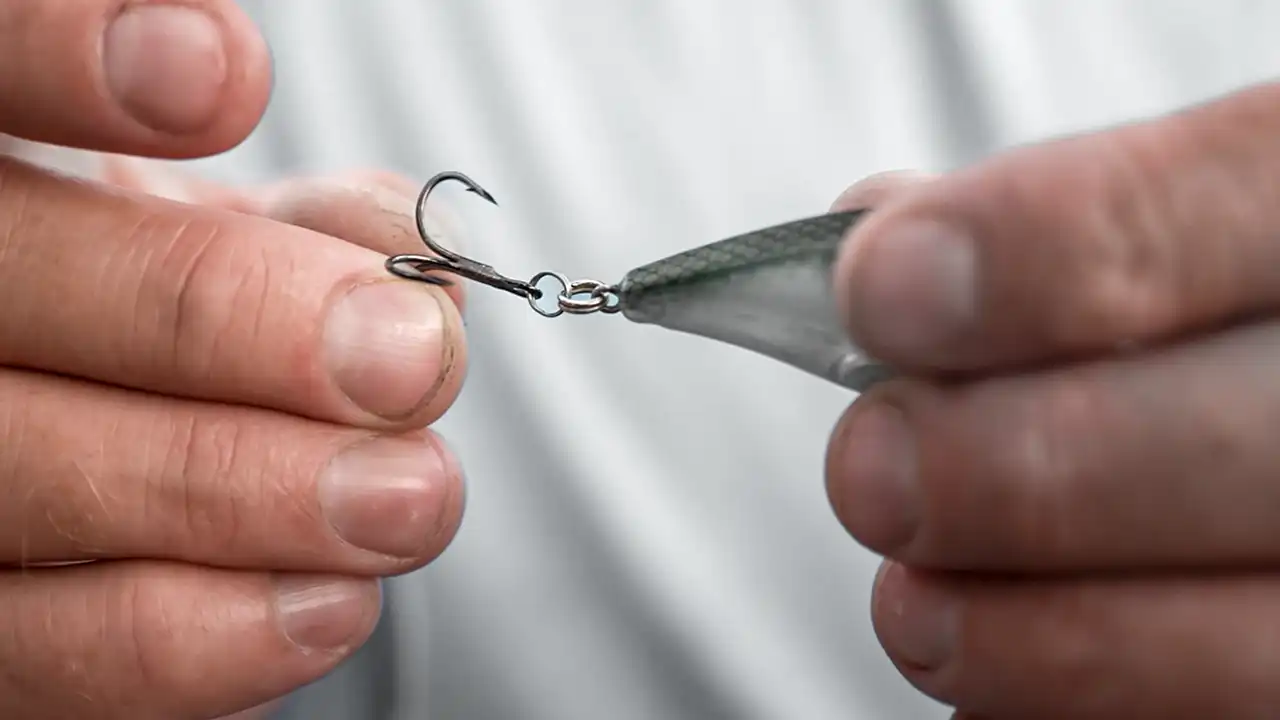It’s a common occurrence. You hook a fish using a hard bait equipped with treble hooks; the fish starts thrashing around, and then it’s gone. Treble hook-equipped lures (e.g., crankbaits, jerkbaits, and topwaters) usually use a single split ring to attach hooks to the bait but but not as effective at keeping fish buttoned as their single hook counterparts. Brett Chapman reveals a simple solution to improve your hook-to-land ratio and maximize catches.
SPLIT RING SUPPLIES (retail links)
- SPLIT RINGS – Buy at Tackle Warehouse
- SPLIT RING PLIERS (scroll down) – Buy at Tackle Warehouse
- TREBLE HOOK – TroKar 3X Strong Wide Gap Treble Hook: Buy at Tackle Warehouse
Instead of settling for the conventional single split ring on baits, Chapman recommends the adding an extra one. The reason is simple physics. With a single split ring, fish can only twist so far before the bait catches and locks up. This limitation often results in the hook tearing the soft part of a fish’s mouth, leading to lost catches.
However, by adding an extra split ring, Chapman demonstrates that it allows the fish to twist beyond 360° without locking up. This simple adjustment reduces fish leverage and hook tear. Furthermore, positioning the hook slightly farther from the bait enhances hookup ratios without compromising the bait’s action.












